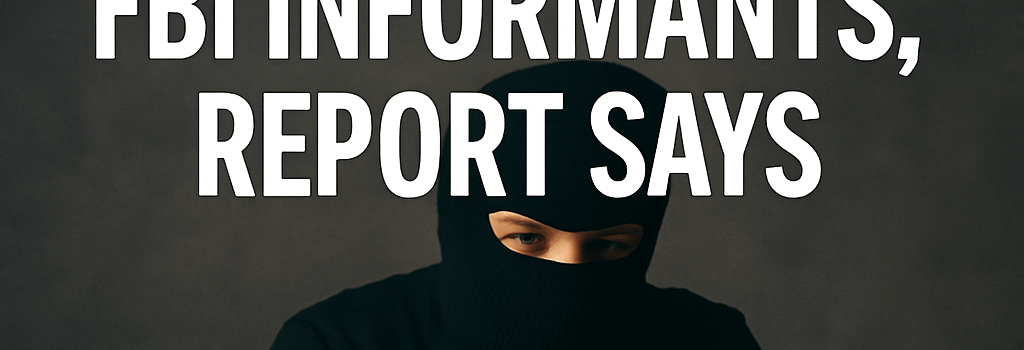Sinaloa Cartel’s Phone Hacks Risk FBI Informants, Report Says

By [Your Name], Senior Security Journalist
Introduction
A newly declassified Justice Department report exposes one of the most brazen examples of ubiquitous technical surveillance (UTS) by the Sinaloa drug cartel. According to the document, cartel operatives successfully hacked the mobile phone of an FBI Assistant Legal Attaché, enabling them to track, intimidate, and in some cases kill cooperating witnesses. This article expands on the technical methods used, situates the threat in the broader context of emerging surveillance technologies, and outlines the FBI’s proposed mitigation strategies.
1. Ubiquitous Technical Surveillance: Scope and Definitions
The report defines UTS as the “widespread collection of data and application of analytic methodologies for the purpose of connecting people to things, events, or locations.” It categorizes UTS into five vectors:
- Visual & Physical Surveillance (CCTV, drones)
- Electronic Signals (cellular, Wi-Fi, Bluetooth)
- Financial Traces (credit/debit transactions, cryptocurrency wallets)
- Travel Patterns (flight logs, toll transponders)
- Online Activity (social media, metadata analysis)
Although these vectors have long been exploited by nation-states, the report warns that recent advances in commercially available tools—including turnkey IMSI catchers, automated facial recognition, and AI-driven link analysis—are democratizing high-end surveillance.
2. Anatomy of the 2018 Phone Compromise
According to an individual “connected to the cartel,” senior Sinaloa leadership retained a third-party hacker who offered a “menu of services” to target key electronic devices. The attack against the FBI official combined multiple layers:
- Social Engineering & Phishing: Customized spear-phishing messages exploiting the official’s network patterns. Malware payloads masqueraded as secure file updates.
- Zero-Click Exploit: Leveraging a then-unpatched vulnerability in the official’s encrypted messaging app (similar to CVE-2021-34527 style flaws). This provided remote code execution without user interaction.
- Location Harvesting: Extraction of Assisted GPS, cell tower triangulation (using unlicensed IMSI catchers), and periodic Bluetooth beacons to map the official’s movements, later correlated with Mexico City’s public camera feeds via open-source computer vision tools.
- Metadata Interdiction: Intercepting signaling system 7 (SS7) messages to capture incoming/outgoing call logs. This technique exploited legacy SS7 protocol weaknesses still present in multiple Latin American carriers.
Once inside the device, the hacker streamed real-time audio, exfiltrated contact lists, and issued remote wipe commands to erase forensic evidence.
3. Technical Deep Dive: Exploits and Hardware Tools
Experts note that cartels now have access to the same off-the-shelf intrusion platforms sold to governments and corporate red teams. Noteworthy examples include:
- Pegasus-style Spyware: A modular implant for iOS and Android, capable of live microphone and camera activation.
- Cellebrite UFED & Grayshift GrayKey: Turnkey forensic extraction appliances able to bypass lock screens via hardware JTAG or NAND mirroring.
- IMSI Catchers (StingRay & Hailstorm): Portable base stations that impersonate legitimate cell towers to coerce handsets into revealing IMSI/IMEI identifiers and precise signal strengths.
In early 2025, a United Nations panel reported illicit sales of such equipment to transnational criminal organizations, bypassing U.S. export controls.
4. Data Correlation and AI-Enhanced Analytics
UTS success hinges on correlating disparate datasets. The report cites an MIT study (2015) showing that just four anonymized transactions can re-identify a credit card holder 90% of the time. Today’s data brokers aggregate:
- Real-time bank transaction feeds
- Geotagged social media check-ins
- Aggregated smart-city sensor outputs (traffic cams, smart lamp posts)
Machine learning classifiers then enrich these feeds, spotting relationships between targets and their contacts—often within minutes. As one former CIA cyber operations officer told us, “The barrier to entry for UTS is collapsing; you don’t need a nation-state budget anymore.”
5. FBI’s Organizational Gaps & Mitigation Strategies
The 2022 internal memorandum highlighted a “disjointed and inconsistent” FBI response to rising UTS incidents. Subsequent procedures proved inadequate, especially after a 2023 data breach exposed sensitive investigative metadata. Key recommendations in the latest report include:
5.1 Document All UTS Vulnerabilities
- Incorporate case-specific exploitation techniques—like social-engineering patterns and network-injection points—into the official UTS playbook.
5.2 Finalize a Unified UTS Strategic Plan
- Define clear ownership of UTS mitigation across all FBI divisions.
- Leverage existing counter-cyber and counter-espionage assets within the Cyber Division and the Operational Technology Group.
5.3 Establish a Central Incident Response Authority
- Create a dedicated UTS Response Cell with 24/7 escalation rights and cross-agency liaisons (e.g., DHS, NSA).
5.4 Expand Advanced UTS Training
- Roll out hands-on labs emulating Pegasus-style implants and IMSI catcher deployments.
- Deploy red-team exercises against live-fire mobile exploitation scenarios.
6. Industry Best Practices & Regulatory Landscape
Beyond FBI reforms, public-private partnerships are critical. Leading security vendors recommend:
- End-to-End Encryption Hardening: Mandatory use of hardware-based secure enclaves (e.g., Apple’s Secure Enclave, Android’s Titan M).
- Zero Trust Architectures: Contextual multi-factor authentication that factors in device posture, geofencing, and user behavior analytics.
- Active Threat Intelligence Sharing: Collaboration via platforms like the Cyber Information Sharing and Collaboration Program (CISP).
On the legal front, U.S. export controls on intrusion software (Wassenaar Arrangement) are under review. In 2025, Congress introduced the Secure Devices Act to tighten domestic sales of IMSI catchers and forensic extraction kits.
Conclusion
“Technical surveillance is no longer purely the domain of intelligence agencies. Criminal syndicates are closing the gap rapidly,” warns Dr. Lina Vasquez, CTO of CounterSpy Labs. “If law enforcement doesn’t adapt, we risk a wholesale collapse of informant networks.”
As the Sinaloa cartel case demonstrates, the stakes are life and death. Implementing robust counter-surveillance measures, updating policies, and strengthening cross-agency coordination are paramount to safeguarding those on the front lines of the drug war.